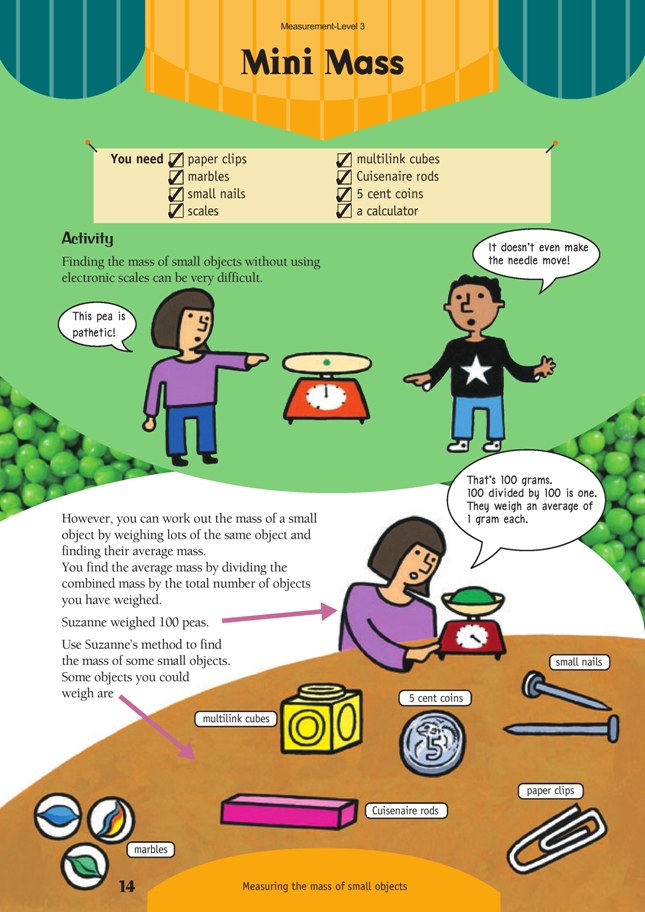This is a level 3 measurement strand activity from the Figure It Out series.
A PDF of the student activity is included.
Click on the image to enlarge it. Click again to close. Download PDF (291 KB)
ue averages to measure the mass of small objects
paper clips, marbles, small nails, 10c coins
FIO, Level 3, Measurement, Mini Mass, page 14
scales
calculator
This activity gets students to solve the problem of how to find the mass of small objects.
Use the illustrations and Suzanne’s first statement to clarify the problem. Discuss solutions proposed by the students. Follow up with Suzanne’s solution and ask: “Why did she choose to weigh 100 peas?”
Highlight the importance of choosing a number that your scales can measure but one that is easy to use to calculate the average mass. Discuss which other numbers would be useful. Mention that the calculator is a useful tool for finding the average mass. Ask the students “What keys on the calculator would Suzanne have had to press to find the average mass? What keys would she have had to press if the mass of 100 peas was 200 grams?”
Explain that the idea of average mass is a practical approximation of the mass of the small object.
It does not have to be the mass of each thing. It would be a good practice to have students look carefully at each group of objects to be weighed and remove any individual item that is very different from the rest, such as a half pea, a steel
marble (rather than a glass one), or a broken nursery stick. A class chart or spreadsheet that shows the different objects being weighed may be a good way to
record the results of the investigation:
Answers to Activity
Answers will vary.


